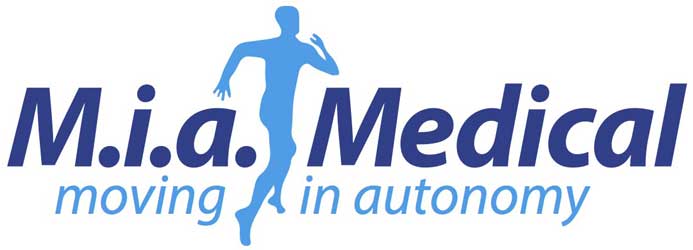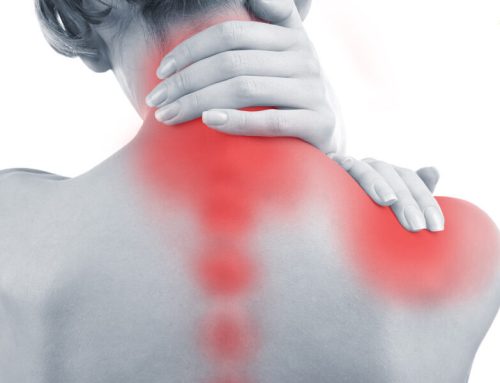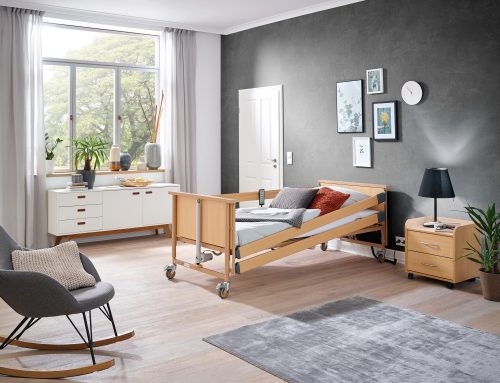Update: Il decreto-legge 17 marzo 2020, n. 18, oggetto di questo articolo, è stato pubblicato nella Gazzetta Ufficiale del 17 marzo 2020, n.70 con in titolo: “Misure di potenziamento del Servizio sanitario nazionale e di sostegno economico per famiglie, lavoratori e imprese connesse all’emergenza epidemiologica da COVID-19.”
We confirm, based on the official text, all the analyses and considerations expressed in the article published below.
As announced, the Council of Ministers in its sitting of 16 March approved a decree-law (dubbed 'Cure Italy'), the second after the one of 2 March, which contains further extraordinary measures to support the economy and families in connection with the COVID-19 epidemic emergency
For obvious reasons of necessity and urgency, the instrument of the decree law was chosen, which comes into force immediately after publication in the Official Gazette and will then be converted into law and presumably amended by Parliament. The text, due to the emergency situation, certainly needs adjustments and refinements that could take place in the House, as well as timely operational and applicative indications to make the many facilitations introduced concrete.
With regard to the entire decree, we focus here strictly on the benefits introduced in favour of persons assisting family members with disabilities and those in favour of disabled persons themselves who are employees.
Work permits (Law 104/1992)
A specific article (Article 24) would exceptionally extend - for the months of March and April 2020 - the work permits provided for by Article 33 of Law 104/1992.
In realtà il testo letterale è piuttosto ambiguo e si presta a diverse letture; l’articolo recita testualmente: “Il numero di giorni di permesso mensile retribuito coperto da contribuzione figurativa di cui all’articolo 33, comma 3, della legge 5 febbraio 1992, n. 104, è incrementato di ulteriori complessive 12 giornate usufruibili nei mesi di marzo e aprile 2020.”
The first most favourable reading is: under the normal regime, leave days are 3 monthly; under the new decree they will be 15 monthly. This adds up to 12 monthly.
La seconda lettura, meno favorevole e condizionata da quel “complessive” è che per marzo e aprile si aggiungano 12 giornate totali di permesso. Il che significherebbe che il totale dei permessi sia: 3 (già previsti a marzo) + 3 (già previsti ad aprile) + 12 (a distribuire fra marzo e aprile) = 18 giorni totali di permesso fra marzo e aprile.
Quale sia l’interpretazione corretta spetta solo al Legislatore dirlo.
Aggiornamento: successive indicazioni dell’Ufficio per le politiche in favore delle persone con disabilità, dell’INPS (messaggio 1281 e circolare 45) e del Ministero del lavoro – di cui diamo conto in altri articoli – hanno adottato la seguente interpretazione: 3 (già previsti a marzo) + 3 (già previsti ad aprile) + 12 (a distribuire fra marzo e aprile) = 18 giorni totali di permesso fra marzo e aprile.
Beyond these aspects, it must be said that the text of the decree refers to the permits provided for by paragraph 3 of Article 33 of Law 104/1992: they are the three-day permits (not hourly permits) and are those granted to parents and family members of persons with an ascertained and documented severe disability; those permits are extended by paragraph 6 of the same Article 33 to workers with an ascertained severe disability.
Aggiornamento: INPS nel suo messaggio 1281 del 20/03/2020 ha precisato che l’estensione di permessi riguarda solo i lavoratori che assistono le persone con disabilità grave e non anche i lavoratori con disabilità grave. Successivamente con circolare n. 45 ha corretto tale prima versione precisando che l’estensione dei permessi spetta sia ai i lavoratori che assistono le persone con disabilità grave e che ai lavoratori con disabilità grave.
In the coming days there will probably also be operational indications from INPS and the Civil Service, if not also from the Ministry of Labour.
Certainly, the extension of permits is easier for those who are already authorised and already use them.
In attesa delle indicazioni operative suggeriamo di concordare già la fruizione con l’azienda o l’amministrazione da cui si dipende, aggiungendo quindi le 12 giornate in più alle 3 già fruite o programmate. Nel presentare la richiesta si ricordi di citare “l’articolo 24, comma 1 del decreto legge 17 marzo 2020, n. 18”. In alternativa si possono attendere le indicazioni operative che arriveranno dall’INPS (per i privati) o da Dipartimento Funzione Pubblica o dalla propria amministrazione per i dipendenti pubblici.
Rimangono invariate le altre norme relative alla retribuzione, alla copertura previdenziale, al referente unico, la distanza massima rispetto al domicilio dell’assistito ecc.
Other regulations in favour of workers with disabilities
Un’altra novità che può essere di notevole impatto sui lavoratori con disabilità la si trova a l’interno dell’articolo che dedicato alle “misure urgenti per la tutela del periodo di sorveglianza attiva dei lavoratori” (articolo 26). Quel’articolo ampia alcune previsioni già presenti nel decreto legge del 2 marzo scorso. Esso risponde alla singolare situazione di lavoratori che si trovino in quella situazione di “sorveglianza attiva”, quella che in modo più semplice si indica come “quarantena”, cioè i casi in cui una persona venga isolata a domicilio per essere stata a contatto di soggetti contagiati da CODIV-19.
These persons cannot work even though they are not technically on sick leave. The combination of the two decrees - the new one and the one of 2 March - equates this condition to hospitalisation, thus a state assimilated to illness and as such paid. At the same time - and this is equally important - the absence is not counted for the purposes of comporto, i.e. that period of absence due to illness beyond which one no longer has the right to keep one's job and may be dismissed for excess sickness.
In this framework, the same status (hospitalisation) is recognised until the end of April, regardless of the condition of 'active surveillance', also to public and private employees in possession of the recognition of disability with connotation of seriousness pursuant to Article 3, paragraph 3, of Law No. 104 of 5 February 1992, as well as to workers in possession of certification 'issued by the competent medical-legal bodies', attesting to a risk condition resulting from immunodepression or from the outcome of oncological pathologies or from the performance of relevant life-saving therapies, even if they are not in possession of the certification of disability with connotation of seriousness (Article 3(1) is sufficient).
Here, too, there are application aspects to be clarified. The most delicate one is undoubtedly on the exact identification of the 'competent medical-legal bodies' called upon to issue the certificates envisaged by the legislator. The most consistent reading would have it be the forensic medicine services of the ASLs, although from an operational and time perspective this raises a number of concerns.
On the other hand, the application appears to be simpler for workers with a certificate of disability with a connotation of seriousness, who could access the new opportunity simply by notifying their employer. The latter, however, will have to have operational indications on how to communicate the absence and obtain compensation.
Parental leave for parents
Preliminary remarks: the system of the different leaves (different in terms of conditions of access, purpose, opportunity, remuneration) is based on the current text of Legislative Decree 151/2001. In particular, for the care and education of children, we usually refer to the leaves provided by Article 32 (Parental Leave) and 33 (Extension of Disability Leave).
Per la parte rimanente dell’anno 2020 viene introdotta (Articolo 23 – privati – articolo 25 – pubblici) una nuova formula di congedo a favore dei genitori (anche affidatari), alternativa ai congedi che abbiamo ricordato sopra (art. 32 e 33): 15 giorni mensili retribuiti al 50% (anziché al 30% di altre formule).
The new leave is normally granted in the case of children up to the age of 12; in the case of severely disabled persons regardless of age as long as they are enrolled in schools of all levels or housed in day care centres.
The leave is granted alternatively to both parents, for an overall total of 15 days per month, and is subject to the condition that there is no other parent in the household who is a beneficiary of income support instruments in the event of suspension or cessation of work or another unemployed or non-working parent.
Again, the application guidelines for requesting the new leave are still lacking.
Una agevolazione simile è prevista anche per i genitori lavoratori iscritti in via esclusiva alla Gestione separata o lavoratori autonomi iscritti all’INPS. Hanno diritto a fruire di uno specifico congedo per il quale è riconosciuta una indennità che compensa parzialmente il lavoro non svolto.
It should just be pointed out that all these benefits are not extended to other family relationships than those of parents/children such as spouse, brother/sister, child/parent.
As an alternative to these work benefits, the decree provides (until the end of the year) for the payment of a bonus for the purchase of babysitting services up to a maximum total limit of EUR 600 paid on application through the 'family booklet'. INPS will provide operational instructions and monitor expenditure. If this exceeds the allocated budget INPS will notify the refusal of the applications received (of those in excess). This bonus is also limited to parents and not other degrees of kinship.
Right to agile work
In recent weeks, terms such as 'agile working' or 'smart working' have become widely used, despite the fact that they were already the subject of elaboration in recent years and also of albeit relatively recent regulatory regulation (in particular Law No. 81, Articles 18/23 of 22 May 2017)
So-called 'agile work' and thus the flexible articulation in time and place of employment in this period takes on a meaning with different implications: it is useful to physically remove people from their usual workplaces to avoid the spread of contagion. This basically means, where possible, doing one's work at home.
A specific article (Article 39) of the new decree provides that, exceptionally (until the end of April), employees with severe disabilities (Article 3(3), Law 104/1992) or who have a severely disabled person in their household, are entitled to work in agile mode 'unless this is compatible with the characteristics of the service'.
As can be easily guessed, this is a rather volatile right and in any case limited to situations where it is actually possible to perform one's duties remotely. A text that, not marginally, is a harbinger of litigation since the assessment of that 'compatibility' is rather discretionary.
On the basis of this indication, the application of 'agile working' can certainly be requested if the practical requirements are met.
On the other hand, there is more uncertainty in providing advice in the event of a refusal, if not to initiate litigation of uncertain timing and outcome.
Closure of day care centres
In recent weeks, there has been much discussion about the preferred choice of so-called 'day care centres' or, more appropriately, semi-residential centres: to close them in the same way as schools or not?
On the one hand, there is an increased risk of contagion, and on the other, a care burden that perhaps most families would not be able to cope with for long.
The decree, in addition to the broader working facilities outlined above, intervenes on this point (Article 47).
The activities of all semi-residential centres of a socio-assistential, socio-educational, multifunctional, socio-occupational, health and social-health character for people with disabilities are suspended. We note that they are practically all except for outpatient extensive rehabilitation centres and the like.
The local health authority may, in agreement with the managing bodies of the day care centres (but only the socio-medical and health care centres), activate 'non-deferrable' interventions in favour of persons with disabilities with a high need for health care support, insofar as the type of services and the organisation of the facilities themselves allow compliance with the envisaged containment measures.
What are the 'non-deferrable' interventions? The standard does not say, thus leaving discretion to the ASLs.
The provision also enshrines the principle that for the duration of the emergency, absences from the activities of the centres, regardless of their number, are not grounds for dismissal or exclusion from them.
In addition to the employment benefits mentioned above, the same article on day care centres adds an element: the absence from work by one of the cohabiting parents of a disabled person cannot constitute just cause for termination of the employment contract (Article 2119 of the Civil Code), provided it is communicated in advance and is motivated by the impossibility of caring for the disabled person following the suspension of day care centre activities.
Home services
The decree, albeit timidly, attempts to address (Article 48), albeit with distinctions and leaving room for administrations, the situation arising from the suspension of educational and school services and of social and welfare activities in day centres for the elderly and for persons with disabilities
This is considered a civil protection emergency resulting in a state of need. In this scenario, the decree provides that the public administrations provide, 'taking into account the available personnel' already employed in these services, even if they are employed by entities operating under a convention, concession or contract, services in individual home-based forms. Alternatively, those services can be rendered either remotely or in compliance with health directives in the same places where the services are normally performed, but without recreating aggregation and therefore 'assemblages'.
Those services can be carried out in accordance with priorities identified by the competent administration, through co-planning with the managing bodies, employing the same operators and the ordinary funds allocated for that purpose, "under the same insurance conditions as hitherto, even in derogation of any contractual, agreement or concessionary clauses, adopting specific protocols defining all the measures necessary to ensure the maximum protection of the health of operators and users."
In essence, the government expects that every effort will be made to continue providing care or support, at home and elsewhere, as long as the guidelines for containing the infection are adhered to.





